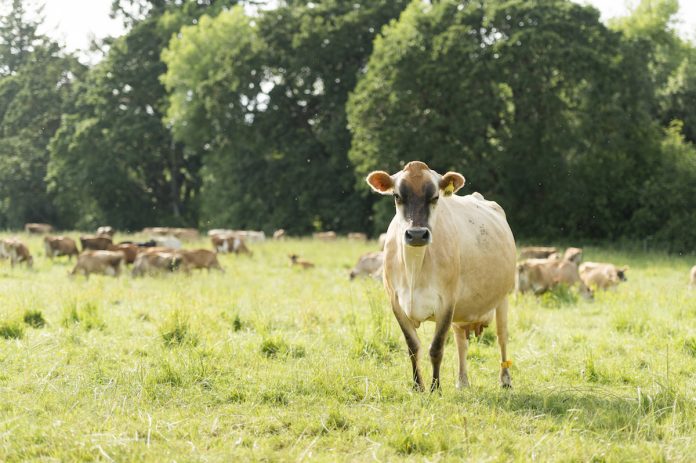Farmers across the country will combine old school with new school as they use satellite photography to measure pasture growth and forage quality.
Organic Valley, the largest organic cooperative in the country, is running the pilot program with 22 farms in 2021, including three farms in Ohio and two in Pennsylvania.
“We’ve talked to folks who have dabbled in this before,” said Wade Miller, senior director of farm resources for Organic Valley, based in La Farge, Wisconsin. “They saw a 20% increase in pasture utilization. That’s why our farmers have invested in this. Their bottom line will be greatly enhanced by being better graziers.”
The technology
The program is using artificial intelligence to read satellite photographs. The technology already exists for people to scout cash crops. Miller said now they have to train it to read pastures. They’re helping write code and farmers are helping fine tune it.
Farmers are measuring the forage dry matter in their pastures using a rising plate meter. The information will be lined up with the satellite photos.
“You eliminate the part where you have to go out and look at all these paddocks and see how they’re doing. You’ll have that handed to you in a report.”
Miller said Michigan State University had done some similar work on its farm, which served as inspiration and encouragement for the Organic Valley program.
The benefit
Organic farmers must have pasture access for at least 120 days a year, to fit the U.S. Department of Agriculture’s organic standards. Miller said many of the farmers in the co-op exceed that.
“Their average days are like 180,” he said. “Their cows are outside for 17.5 hours during the grazing season.”
Most of their farmers also use rotational grazing to manage their pastures. For Jon Bansen, it was the only way he would be able to farm profitably.

The goal of Organic Valley’s satellite grazing project is to use this imagery to not just see the relative changes, but to measure the amount of biomass across these acres. Having numbers to match the colors will allow for better management of pasture.
“We realized we didn’t have the land base to do lazy grazing,” he said.
Bansen is an Organic Valley dairy farmer, in Oregon. He milks about 175 Jerseys and manages about 600 acres, although he started with about 110 acres on his original farm.
He took part in the precursor to the satellite pilot program, although he was skeptical at first. What could a satellite and a computer tell him that he couldn’t see by looking at his fields? But he soon realized the value of it, he said.
“I could take a look at that imagery and tell when I had weaknesses in my pastures right away,” he said. “I could see fields that might have been ready to graze before others, even though the rotation said otherwise.”
He wouldn’t make a change to his grazing plan without looking at the pastures himself, but every time found a discrepancy between the satellite report and his grazing plan, he found the satellites were right.
“It allowed me to see my farm and all my pastures in one minute on my phone,” Bansen said. “And so it just gave me immediate feedback. If you’re a thinking individual, this helps you adjust accordingly. It’s a time saver.”
The future
Farmers participating in the pilot program are from all over the country. That will help the technology to understand how pastures look and grow in different regions, Miller said.
The program will open up to all 1,600 farm in the co-op next year, Miller said. They can volunteer to receive a report. Organic Valley works with 195 dairies in Ohio, 242 in Pennsylvania and four in West Virginia.
Miller said it’s a great opportunity for its small dairy farmers. The average herd size of its farms is 72 cows.
“To compete in a world like that, the pasture helps us do that,” he said. “Pasture helps put profitability into a family scale operation.”
(Reporter Rachel Wagoner can be contacted at 800-837-3419 or rachel@farmanddairy.com.)











